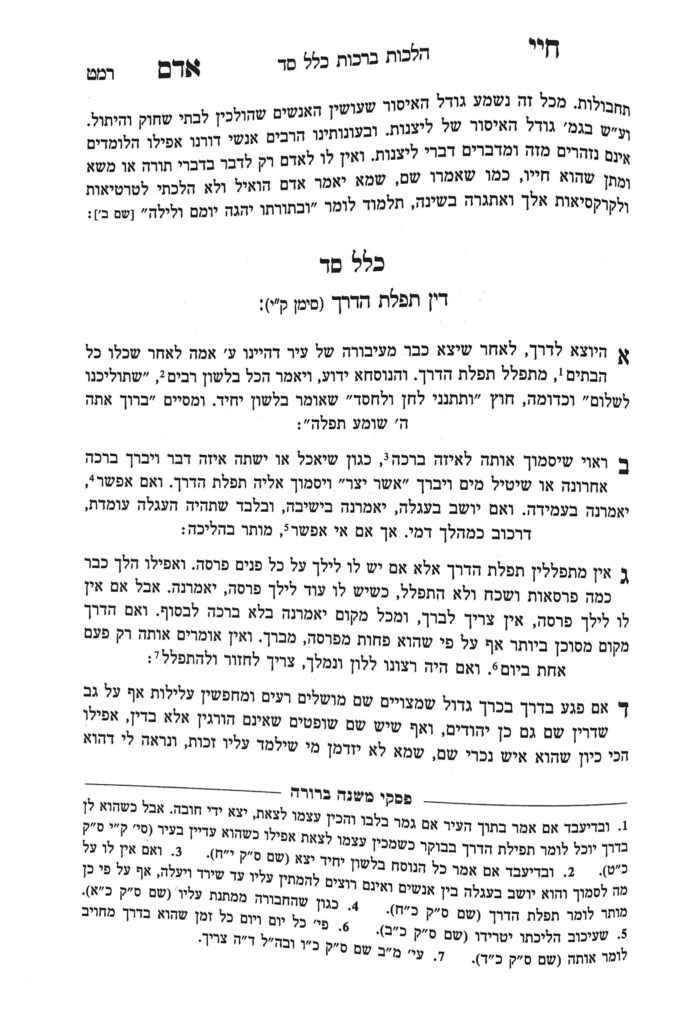We are continuing in siman 2. The Chayei Adam will discuss the position a person should be in when reciting tefillas haderech.
The Chayei Adam writes that if possible, a person who is walking should stand still when reciting tefillas haderech. If a person is seated in a wagon, they do not need to get out of the wagon and stand up, but should stop the wagon while reciting the bracha. The Chayei Adam explains that there is a halachic concept that rachuv k’mehalech dami, riding on something in motion is considered halachically equivalent to being in motion oneself. In other words, a person in motion is considered walking. It is better to be seated still than the halachic equivalent of walking when reciting tefillas haderech, so when one is en route, they should at least stop the wagon so that they are seated still.
The Gemara discusses the concept of rachuv k’mehalech dami regarding standing up for a talmid chochom. The Gemara states that due to this concept, if one sees a talmid chochom riding past them, they must stand up, because the talmid chochom is considered walking himself.
Our modern equivalent of this halacha is that if one is driving, and if it is safe to pull over, one should pull over to the side of the road in order to recite tefillas haderech. However, if one will be distracted and will not be able to recite the bracha with kavanah (whether because they are in a rush or because they are not in a safe place), they do not need to pull over.
The Gemara states that we have a concept of shomeiah k’oneh, that one can be motzi another in an obligation (see more in shiur 1210, 1211). However, a person should not use this concept for tefillah unless they are unable to daven themselves. Tefilla is our way of asking Hashem for mercy, and it is most appropriate for every individual to ask for themselves. Thus, since tefillas haderech is an act of asking Hashem for mercy, every person should recite it themselves. If one is unable to recite it, they can have another recite it on their behalf, but lechatchilla every person should recite it to themselves.
Regarding the driver of a car, if they will be distracted by pulling over, they may recite tefillas haderech while in motion, as we have learned above. If there are others in the car, it is still preferable for the driver to recite the tefilla to themselves, but if they do not know the nusach by heart, they may have someone be motzi them through shomeiah k’oneh.
Summary
- Lechatchilla, a person should recite tefillas haderech when standing still. If they are unable to, they may recite it sitting, or even while in motion (i.e., walking or driving).
- If a driver is unable to stop, it is preferable for them to recite tefillas haderech by heart rather than have someone motzi them through shomeiah k’oneh, but are still yotzei if they need to rely on it.



